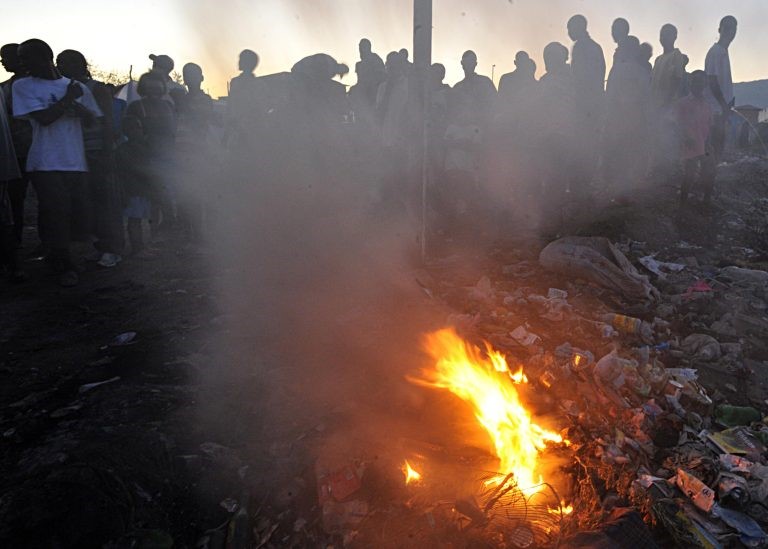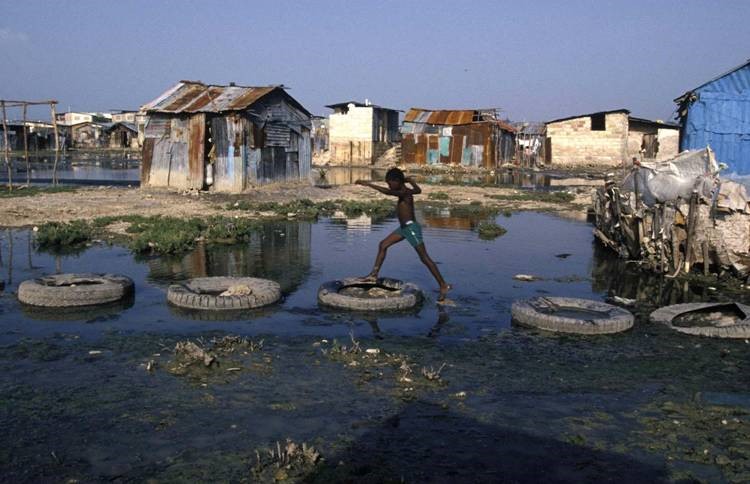
Port-au-Prince. Safe with an escort, a trusted community leader, we toured Cite de Soleil, the feared shanty town of Port-au-Prince. We were in the worst slum of the worst city in the Western Hemisphere, where tens of thousands of people squeezed into shacks built from scraps and garbage. A European film crew had arrived unescorted the week before, and their expensive TV camera had been smashed and they had fled the slum on foot. President Aristide’s loyalists make their last stand there. Even U.N. Peacekeepers cannot enter safely.

Child at play in Cite de Soleil, in the slums of Port-au-Prince, Haiti.
© Les Stone 2004.
We passed children with extended bellies, swollen not from eating too much, but from malnutrition. Growing up in Ohio, I made mud cakes for fun. These children made them as well, but to eat. I have since learned, from the excellent book, The Neglected and Abused: A Physician’s Year in Haiti, that geophagia is the medical name for this tragic phenomenon [Bentivegna, M.D., Joseph F.; Michelle Publishing Company, CT; 1991; 175 pp.].
As our tour continued, we passed over a large sewage canal deep with rich filth, plants growing over the mud flats, and pigs rooting though the garbage for food. We crossed a narrow wooden planked footbridge to the other side, hopping over two missing planks in the very middle.
I asked my Haitian companions why these planks had not been replaced. With hesitation, and after conferring with each other in Creole, they said that the missing planks had a purpose, for the gap that formed was where women who did not wish to bear life into hell could squat at night and release their offspring into the black darkness below, to sink into the mud as sustenance for the pigs.